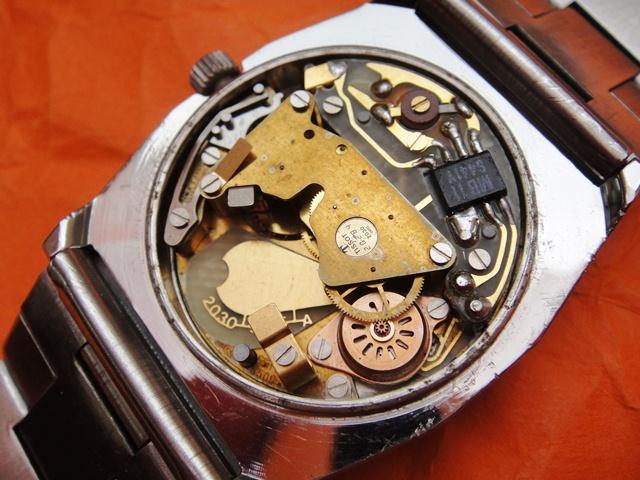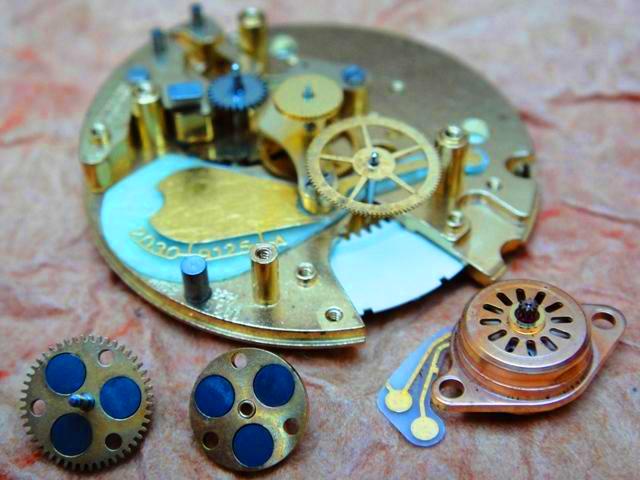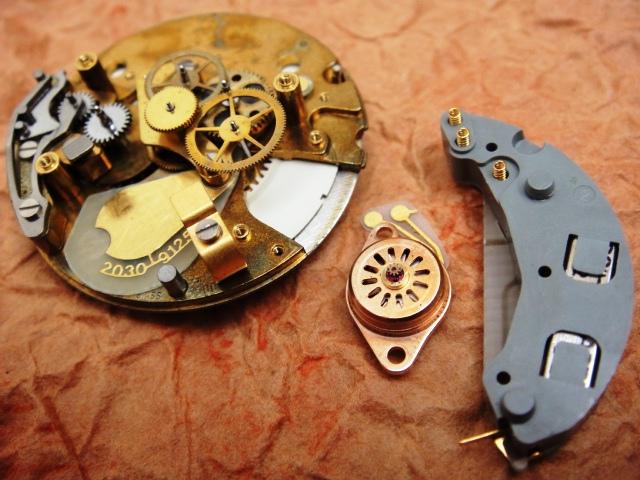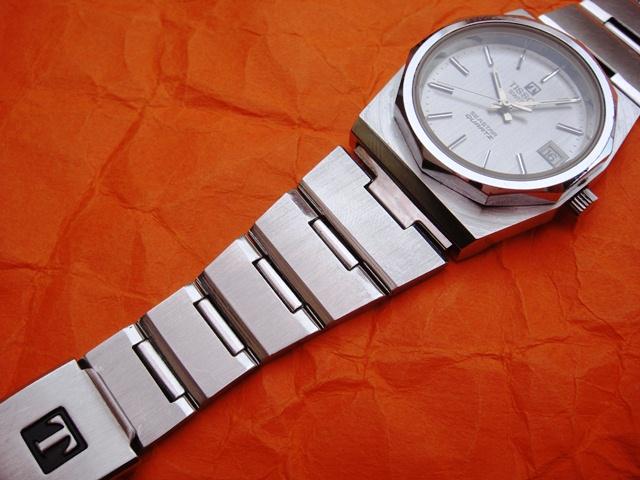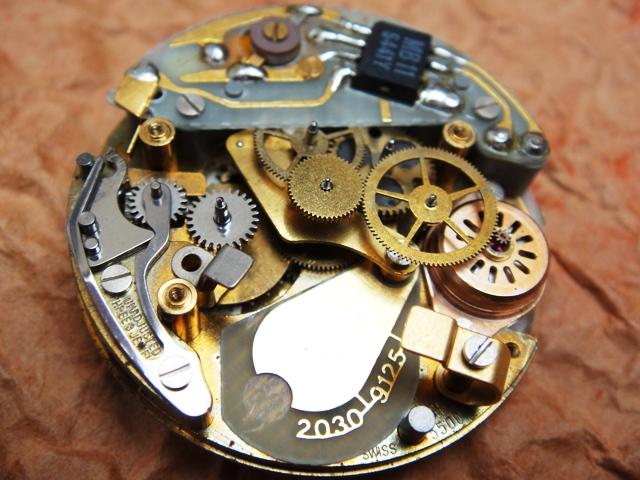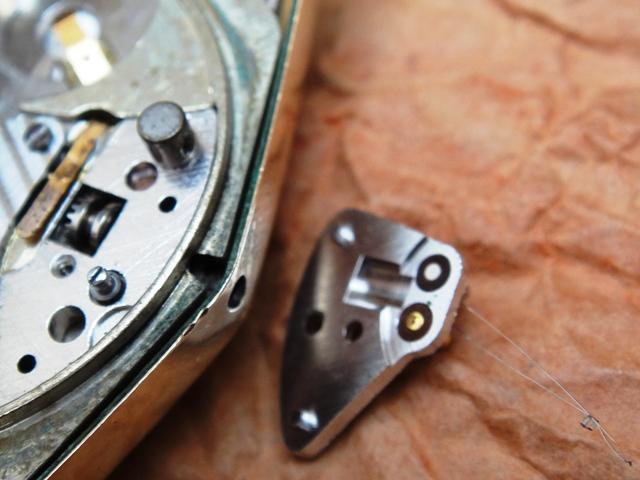TISSOT SEASTAR 2030 QUARTZ 1977
The 2030 calibre appears to be the first inhouse quartz invention from Tissot. Their earlier quartz watches until 1976 housed the Omega 1310 calibre (2100) what somehow proves that both companies did not cooperate extensively in the field of research. If not for official serial charts I would never believe that this watch (numbered 20284) was made in 1977. The construction with large components would fit a lot better in 1973. Considering that already in 1978 Tissot introduced a slightly upgraded 2031 I'm curious why they bothered to market such an obsolete movement as late as 1977? This calibre can be found in many brands of the SSIH group from the late 70's but it should not even be called 2030!
The baseplate is clearly marked SSIH 5500 (SSH with a line across the middle). I have not been lucky in finding any other movements with this logo so it's quite a mystery as to who and when really created this calibre. The sequence of calibre numbers must mean something... the 2030 from 1977 is before the 2100 from 1976. The time-zone setting works the same way as in the MegaQuartz but it's a cheaper alternative - the double-layer time-zone wheel has three large ferrite magnets instead of alnico or platinum magnets (check pic below). So... the 2030 is either a cheap version created for the poor sibling or perhaps this invention was created first and deliberately delayed and robbed for the concept by Omega? Or maybe development started earlier but wasn't ready in time so Tissot was forced to borrow the 2100? Who knows? :)
The time-zone option allows to change the hour-hand and is the only setting available upon pulling out the crown. Because minutes can not be adjusted manually many of these watches are described as broken. The setting procedure is performed by the stepping motor what requires a battery and indepth know-how. Thorough troubleshooting will usually not prove successful: 1) press the crown to stop seconds - the clutch lever must touch a plate on the circuit module; 2) hold crown depressed for 5 seconds; 3) release for a fraction of a second; 4) depress crown again and hold until the hands rotate to the desired position. This automatic/motorized setting idea must have been considered a breakthrough (on the drawing board) but it turns out to be pure mayhem in real life.
Making a full 12-hour cycle with the minute-hand takes 120 seconds and will end up with a soar finger! The clutch-lever (which acts like a spring) is very stiff and requires big pressure to depress the crown (despite greasing!). The best option is to manually rotate the hour-hand slightly backwards from your actual time and then proceed with the motorized minutes. It will save you time and effort but it still takes forever in comparison to an ordinary procedure. The build of the movement is pretty simple and can be quickly disassembled. Pulling out the stem with crown might be difficult as the entire cluth levers will need to be unscrewed (greatly improved in the 2031). If your watch does not want to work please check the contacts on the motor and the 3 corresponding contact springs on the electronic circuit (picture to the right).
Keywords: tissot quartz, seastar quartz, 2030, buler, lanco
Market value: 50-150$ (version, condition)


